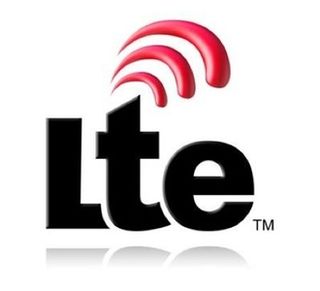How To: Increase Your Smartphone's Battery Life
Our phones are getting smarter and smaller--that means there's less room for a powerful battery. Here's how to make yours last longer.
Tips for 4G LTE, WiMax, and OLED Screen Devices
Those Pesky 4G LTE and WiMAX Devices

When the very first 4G LTE smartphone, the HTC Thunderbolt, hit the market, Verizon’s new LTE subscribers quickly discovered something Sprint users had been dealing with for about a year: 4G kills your battery. Yes, with LTE you can actually achieve download speeds exceeding 25Mbps, but there are very few tasks that need that much speed. A web page might load one or two seconds faster, but what good is that when your phone is dead after six hours. LTE and WiMAX are really only useful for a handful of things, like streaming HD videos and downloading a large file quickly. It’s best just to turn 4G off except in those rare cases when you need it. This same concept can be applied to 3G and 2G as well, but the speed penalties of using 2G aren’t worth the small battery savings.
Android – This is another case where setting toggle widgets can be useful. To enable/disable 4G manually, go to Settings>Wireless & Networds>Mobile Networks. On 4.0, this is under Settings>More…>Mobile Networks.
WP7 – Not all WP7 devices offer the option to disable 4G, but for those that do, it’s found in Settings>Cellular. Apps like WP Shortcut Tiles are useful for this as well.
iOS – The iPhone does not feature 4G; however, in Settings>General>Network, you can disable 3G if you don’t mind crawling along at EDGE speeds.
This trick is only particularly useful for WiMAX and LTE devices. HSPA+ 4G devices typically don’t offer settings to disable 4G since HSPA+ will use the same connection as HSPA. HSPA+ is also a lot easier on your battery than the other 4G types.
The Brilliance of OLED Screens
Sign up to get the BEST of Tom's Guide direct to your inbox.
Get instant access to breaking news, the hottest reviews, great deals and helpful tips.

There are a good chunk of smartphones out there with OLED screens. Most current Samsung devices use Samsung’s AMOLED technology, as do a handful of phones from other manufacturers. A few Sony devices have OLED screens as well.
OLED displays work by having each pixel generate and emit its own light, as opposed to backlighting the entire screen as with TFT/LCD displays. As a result, OLEDs draw essentially zero power when displaying black pixels. This is something that is easy to take advantage of.
Android – Most OLED Android devices already have a black color theme, but if yours doesn’t, you can consider downloading a home screen replacement app from the marketplace. Launcher Pro and ADW Launcher are both great choices that have black themes available. Using a black wallpaper and setting black color schemes for apps that allow it is helpful, too.
WP7 – Using the “dark” background in Settings>Themes is a good first step. Another useful trick is to align your tiles into a checkerboard-like pattern so that the black background shows through on more of the screen. You do loose a bit of functional screen space, but it can be worth it. If you want to go hardcore, you can Dev Unlock your WP7 phone and create black tiles using an XAP, but this is something for advanced users.
iOS – The iPhone’s Retina Display is a TFT display, not OLED, so it will always draw the same amount of power any time it’s on, regardless of what it’s showing.
Web browsing is a bit problematic with OLED displays because they’re at a disadvantage when displaying white pixels. An entirely white screen will use about twice the power on an OLED display than on a similar TFT display. As you’re probably aware, most websites use white backgrounds. One wonderful way around this, at least partially, is to use the mobile web search http://bgoog.com. This is mostly useful for Android devices since WP7 already has a black theme with its integrated Bing search.
Current page: Tips for 4G LTE, WiMax, and OLED Screen Devices
Prev Page More Tricks For General Battery Nirvana Next Page Tips and Tricks Specific to Android-
fb39ca4 or, for ios, you can just use springboardsettings -you can toggle stuff while still in an app.Reply -
virtualban Project the image directly to the retina for a smaller display and consumption. Or better, tap into the optical nerve and transmit the image directly there.Reply
- uncalled for -
I'm going to patent these ideas, even though many people had these in the past, and will allow everybody to use the ideas for free, except apple, who has to pay me, or die. -
quantumrand fb39ca4or, for ios, you can just use springboardsettings -you can toggle stuff while still in an app.Reply
That is a good option, and there are a lot of other apps that can do this as well, but they all require that you jailbreak your iPhone first. -
Thanks for including BlackBerry OS7 phones.... no wonder the brand is dying... people won't even include them in generic non-partisan articles!Reply
-
cookoy i find turning on flight mode saves a lot of juice. But my boss and my wife aren't particularly happy if i do this.Reply -
quantumrand Matt CThanks for including BlackBerry OS7 phones.... no wonder the brand is dying... people won't even include them in generic non-partisan articles!Reply
There isn't a ton you can do on a BlackBerry to save battery life. Their smaller screens and lower performance processors make for a pretty long battery life to begin with. You can still apply several of the concepts mentioned in the article to a BlackBerry, like training the battery, toggling WiFi/Data, and changing pull/push settings for things like e-mail. -
jgutz2006 "last longer between charges" thought that might be some sort of male sexual innuendo...Reply -
techy74 Good article. We all love our smart phones. We dont all love how spend half their life on the charger.Reply
Most Popular
